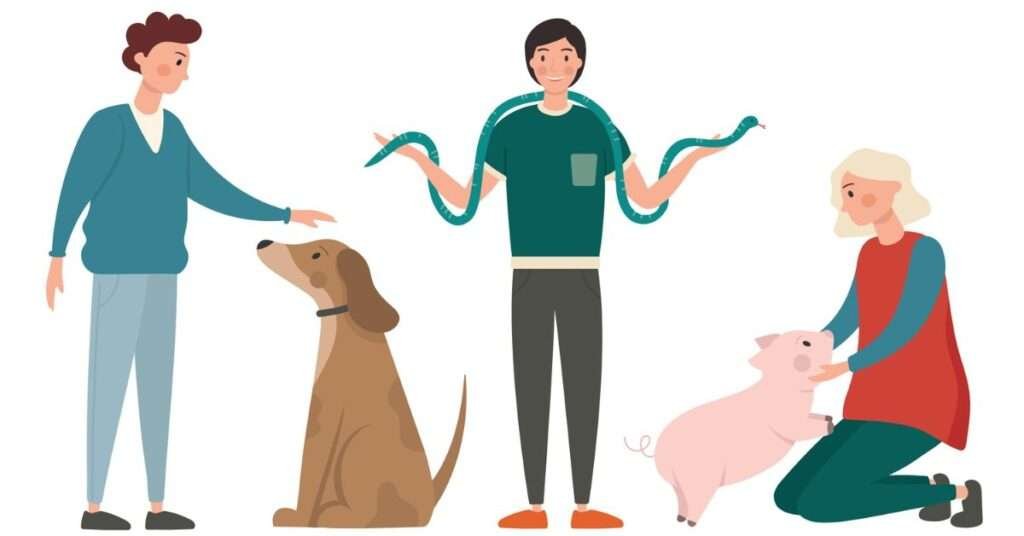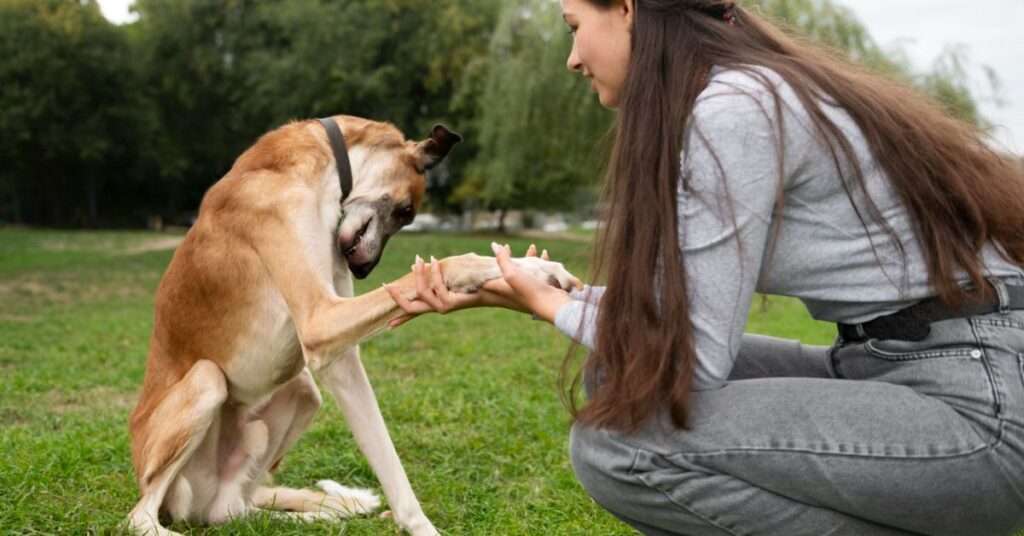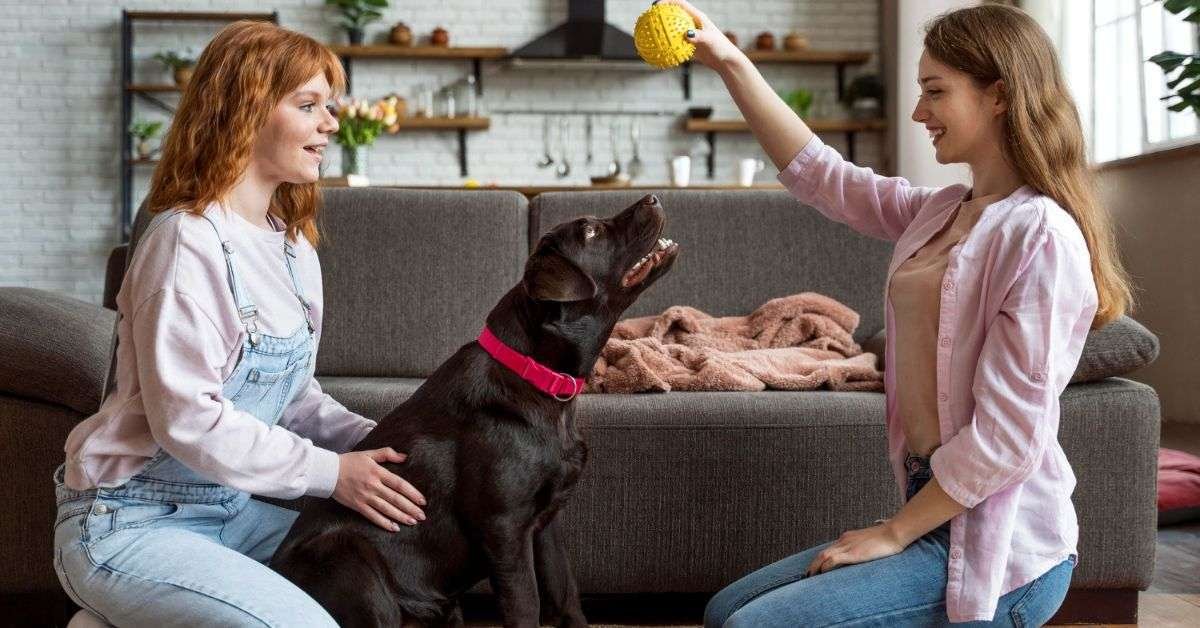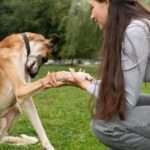Safety Tips for Pets at Home should first be issued to pet owners. Pet owners love their furry friends and want to provide them with a safe and comfortable home. However, accidents can happen, and it is important to take precautions to ensure the safety of pets.
Also Read
From securing hazardous materials to preventing falls, there are several safety tips that pet owners can follow to create a safe environment for their pets.
One of the most important safety tips for pets is to secure hazardous materials. Household items such as cleaning products, medications, and certain foods can be toxic to pets. It is important to store these items in a secure location that is out of reach of pets.
Additionally, it is important to keep an eye on pets when they are outside to prevent them from coming into contact with toxic plants or chemicals.
Another safety tip for pets is to prevent falls. Pets can easily fall off furniture or downstairs, which can result in serious injuries. To prevent falls, pet owners can install baby gates or use pet ramps to help pets navigate stairs.
Additionally, pet owners can provide soft surfaces for pets to land on, such as rugs or pet beds, to cushion any falls that may occur.
Safety Tips for Pets at Home
Pets can exhibit a wide range of behaviors, and it’s important for pet owners to understand what these behaviors mean in order to keep their pets safe and healthy.
This section will cover two sub-sections: Recognizing Pet Stress Signs and Understanding Pet Body Language.
Recognizing Pet Stress Signs
Pets can experience stress just like humans do, and it’s important to recognize the signs of stress in order to address the underlying cause and prevent further harm. Some common signs of stress in pets include:
- Excessive barking or meowing
- Aggressive behavior
- Hiding or avoiding interaction
- Excessive grooming or scratching
- Loss of appetite
- Diarrhea or vomiting
- Increased lethargy or decreased activity
If a pet owner notices any of these signs, they should take steps to address the underlying cause of stress. This may involve providing a more comfortable living environment, reducing noise or other stressors, or seeking professional help.

Understanding Pet Body Language
Pet body language can be a helpful tool for pet owners to understand their pets’ moods and needs. Some common body language signals in dogs and cats include:
- Tail wagging or twitching
- Ear position
- Eye contact
- Body posture
- Vocalizations
For example, a dog with a wagging tail and relaxed body posture is likely happy and friendly, while a dog with a stiff body, raised fur, and growling may be feeling threatened or aggressive.
Similarly, a cat with dilated pupils and flattened ears may be feeling defensive or scared.
By understanding their pets’ body language, pet owners can better communicate with their pets and provide a safe and comfortable environment for them to thrive in.
Creating a Safe Environment
When it comes to keeping pets safe at home, creating a safe environment is essential. This involves pet-proofing your home and providing safe outdoor spaces for your furry friends to play.
Pet-Proofing Your Home
Pet-proofing your home is an essential step in ensuring your pets are safe. Here are some tips to help you pet-proof your home:
- Keep medications and chemicals out of reach: Medications and chemicals can be harmful to pets if ingested. Keep them in cabinets or drawers that your pets cannot access.
- Secure trash cans: Make sure your trash cans have secure lids to prevent pets from getting into them and potentially ingesting harmful items.
- Cover electrical cords: Electrical cords can be tempting for pets to chew on, which can lead to electrocution or other injuries. Cover them with cord protectors or hide them behind furniture.
- Use pet-friendly cleaning products: Many commercial cleaning products contain harsh chemicals that can be harmful to pets. Use pet-friendly cleaning products or make your own using natural ingredients.
Safe Outdoor Spaces
Providing safe outdoor spaces for your pets to play is just as important as pet-proofing your home. Here are some tips to help you create a safe outdoor space for your pets:
- Install a fence: A fence can help keep your pets contained and prevent them from running into the street or other dangerous areas.
- Check for toxic plants: Make sure your yard does not contain any toxic plants that can be harmful to your pets if ingested.
- Provide shade and water: Make sure your pets have access to shade and water while they are outside to prevent them from overheating.
- Avoid leaving pets outside in extreme weather: Extreme temperatures can be dangerous for pets. Avoid leaving them outside in extreme heat or cold.
By following these tips, you can create a safe environment for your pets at home.

Nutrition and Hygiene
Choosing the Right Food
Proper nutrition is essential for the health and well-being of pets. It is important to choose the right food for your pet, based on their age, breed, and health condition.
Consult with a veterinarian to determine the best diet for your pet. Some pets may require a special diet due to allergies, weight management, or medical conditions.
When selecting pet food, read the labels carefully and choose high-quality brands that contain essential nutrients such as protein, vitamins, and minerals.
Avoid buying pet food that contains fillers, artificial preservatives, and by-products. It is also important to provide fresh, clean water at all times.
Maintaining Pet Hygiene
Maintaining proper hygiene is crucial to keep pets healthy and happy. Regular grooming, cleaning, and sanitation practices can prevent the spread of diseases and infections.
Grooming includes brushing your pet’s coat, trimming their nails, and cleaning their ears. Regular grooming can help prevent matting, skin infections, and other health issues.
Cleaning your pet’s bedding, toys, and food bowls regularly can also help prevent the spread of bacteria and parasites. Use pet-safe cleaning products to avoid exposure to harmful chemicals.
In addition, it is important to keep your pet’s living space clean and free of clutter. Regularly vacuuming carpets and floors can help prevent the buildup of pet hair and dander, which can trigger allergies in humans.
By following these nutrition and hygiene tips, pet owners can help ensure their pets live happy and healthy lives.
Handling Emergencies
It’s important to be prepared for emergencies that may arise with your pets at home. Here are some tips on how to handle emergencies:
First Aid for Pets
In case of an emergency, it’s important to have a first aid kit for your pets. The kit should include items such as gauze, bandages, hydrogen peroxide, and scissors.
It’s also important to have a list of emergency contact numbers, including your veterinarian’s phone number and the nearest 24-hour emergency animal hospital.
If your pet is injured, it’s important to approach them slowly and calmly. If they are in pain, they may be scared and lash out. If there is bleeding, apply pressure to the wound with a clean cloth.
If your pet is choking, try to remove the object from their mouth using tweezers or pliers. If they are not breathing, perform CPR if you are trained to do so.
Emergency Contact Numbers
Having the right emergency contact numbers on hand can make all the difference in an emergency. Make sure to have your veterinarian’s phone number as well as the nearest 24-hour emergency animal hospital.
It’s also a good idea to have the phone number for the ASPCA Animal Poison Control Center, in case your pet ingests something toxic.
Here are some important emergency contact numbers to have on hand:
| Contact | Phone Number |
|---|---|
| Veterinarian | [INSERT PHONE NUMBER HERE] |
| Emergency Animal Hospital | [INSERT PHONE NUMBER HERE] |
| ASPCA Animal Poison Control Center | (888) 426-4435 |
By being prepared and having the right information on hand, you can help ensure the safety of your pets in case of an emergency.
Training and Socializing
Basic Training Tips
Training your pet is essential for their safety and well-being. Basic training tips include teaching your pet to come when called, sit, stay, and walk on a leash.
These commands can be taught using positive reinforcement techniques, such as giving treats or praise, when your pet successfully follows a command. Consistency is key when training your pet, so it’s important to practice these commands regularly.
In addition to basic obedience training, it’s also important to train your pet to avoid dangerous behaviors, such as chewing on electrical cords or eating toxic substances. Providing your pet with plenty of toys and safe chewing options can help redirect their behavior.
Socializing Your Pet
Socializing your pet is crucial for their mental and emotional well-being. Socialization involves exposing your pet to different people, animals, and environments in a positive and controlled manner.
This can help your pet learn how to interact with others and reduce the risk of aggressive behavior.
Socialization should begin at a young age, but it’s never too late to start. Gradually introduce your pet to new situations and people, and reward positive behavior with treats and praise.
It’s important to be patient and take things at your pet’s pace, as forcing them into uncomfortable situations can have the opposite effect.
Consider enrolling your pet in a socialization or obedience class, where they can interact with other pets and learn from a professional trainer. This can be a great way to socialize your pet in a safe and controlled environment.
Overall, training and socializing your pet are important steps in keeping them safe and happy at home. With consistency and patience, you can help your pet develop good behaviors and positive relationships with others.
Regular Vet Check-Ups
Regular vet check-ups are essential for the health and well-being of pets. These check-ups can help identify early health concerns and prevent them from becoming more serious.
In this section, we will discuss the importance of regular check-ups and the role of vaccination and deworming in maintaining your pet’s health.
Importance of Regular Check-Ups
Regular check-ups with a veterinarian are crucial for detecting and treating health problems in pets. During these check-ups, the vet will examine your pet’s overall health, including their weight, body temperature, heart rate, and respiratory rate.
They will also check for any signs of illness or injury, such as abnormal behavior, lumps or bumps, or changes in appetite or behavior.
In addition to checking for health problems, regular check-ups also provide an opportunity to discuss your pet’s diet, exercise routine, and other aspects of their care.
Your vet can offer advice on how to keep your pet healthy and happy, including recommendations for preventive care such as flea and tick prevention, dental care, and more.
Vaccination and Deworming
Vaccination and deworming are important aspects of preventive care for pets. Vaccinations protect against infectious diseases that can be life-threatening, while deworming helps to prevent parasites from causing health problems.
Your vet will recommend a vaccination schedule based on your pet’s age, breed, and lifestyle. Some vaccines are required by law, while others are recommended based on your pet’s risk of exposure to certain diseases.
Common vaccines for dogs include rabies, distemper, parvovirus, and Bordetella, while common vaccines for cats include rabies, feline leukemia, and distemper.
Deworming is also an essential aspect of preventive care. Parasites such as roundworms, hookworms, and tapeworms can cause serious health problems in pets, including diarrhea, vomiting, and weight loss. Your vet can recommend a deworming schedule based on your pet’s age and risk of exposure to parasites.
In conclusion, regular vet check-ups are an essential aspect of pet care. They provide an opportunity to detect and treat health problems early, as well as to discuss preventive care measures such as vaccination and deworming.
By working with your vet to maintain your pet’s health, you can ensure that they live a long and happy life.

Frequently Asked Questions
How can I make my home safe for my pets?
There are a few things you can do to make your home a safe environment for your pets. First, make sure to keep any hazardous materials, such as cleaning supplies or medications, out of reach.
You should also ensure that any small objects that could be swallowed are kept out of reach.
Additionally, make sure that any cords or wires are secured and not accessible to your pets. Finally, consider investing in pet gates or barriers to keep your pets out of areas where they could get hurt.
What are some common hazards for pets at home?
There are a number of hazards that pets can encounter in the home. Some of the most common include toxic substances like cleaning supplies, medications, and certain foods.
Other hazards include sharp objects, small objects that can be swallowed, and cords or wires that can be chewed. It’s important to be aware of these hazards and take steps to prevent your pets from coming into contact with them.
What should I include in my pet emergency kit?
It’s a good idea to have an emergency kit on hand in case of an emergency. Your pet emergency kit should include a first aid kit, any necessary medications, food and water, a leash and collar, and any important documents, such as vaccination records.
You should also include a blanket or towel and a carrier or crate in case you need to evacuate.
How can I keep my pets from chewing on cords and furniture?
Chewing is a common behavior for pets, but it can be dangerous if they chew on cords or furniture. To prevent this, you can try spraying cords and furniture with a bitter-tasting spray that will deter your pets from chewing.
You can also provide your pets with plenty of toys and chews to keep them occupied and deter them from chewing on inappropriate objects.
What are some tips for grooming my pets at home?
Grooming is an important part of pet care, and it’s something that you can do at home. Depending on your pet’s needs, you may need to brush their fur regularly, trim their nails, or clean their ears.
Make sure to use the appropriate tools and techniques for your pet’s specific needs, and be gentle and patient.
What are some do’s and don’ts when it comes to pets at home?
Do provide your pets with plenty of love and attention, exercise, and a safe and comfortable environment. Don’t leave your pets unattended for extended periods of time, allow them to roam unsupervised outside, or give them access to hazardous materials or objects.
Additionally, don’t neglect their basic needs, such as food, water, and veterinary care.





Comments are closed.